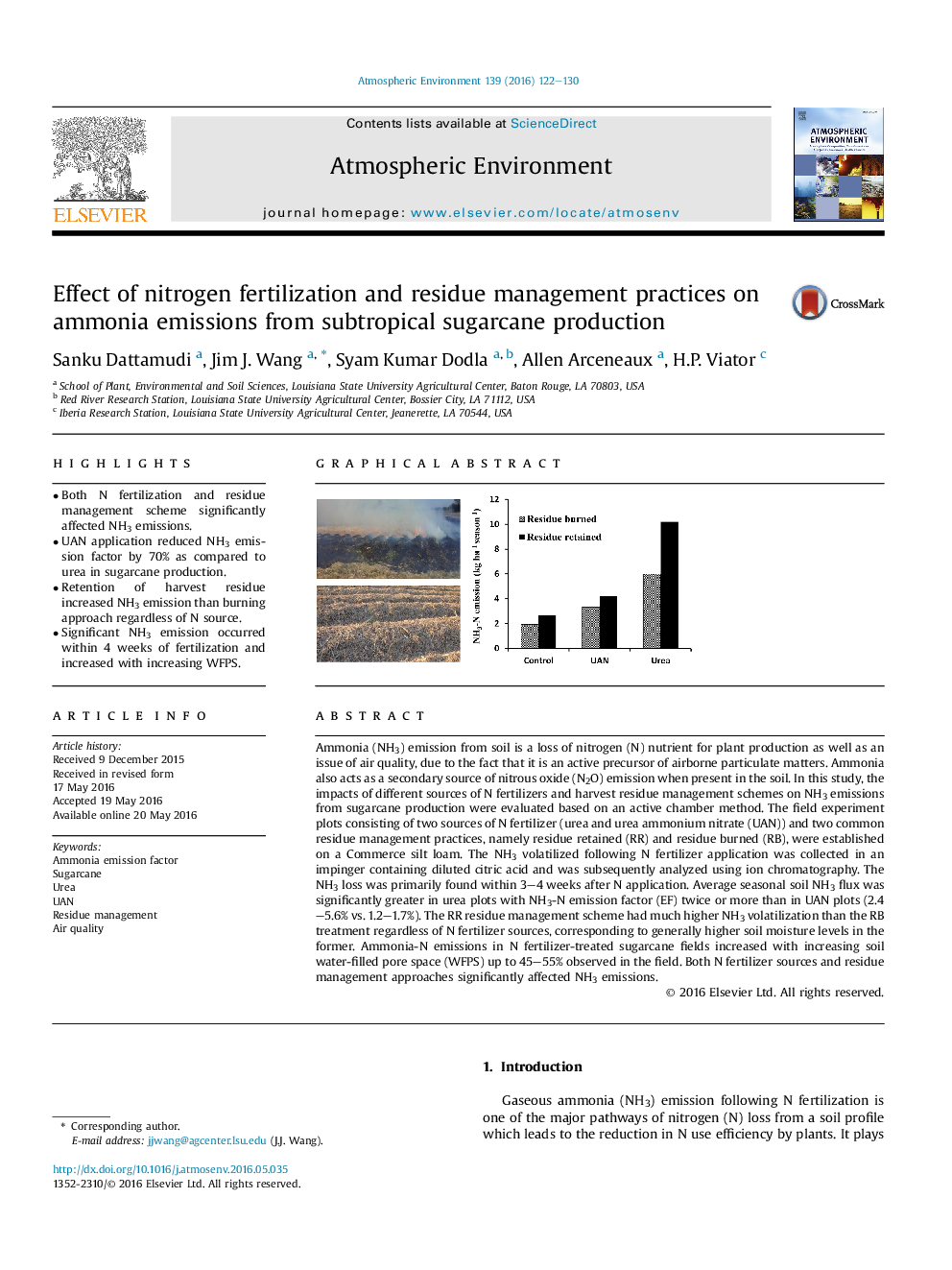| کد مقاله | کد نشریه | سال انتشار | مقاله انگلیسی | نسخه تمام متن |
|---|---|---|---|---|
| 6336307 | 1620335 | 2016 | 9 صفحه PDF | دانلود رایگان |
- Both N fertilization and residue management scheme significantly affected NH3 emissions.
- UAN application reduced NH3 emission factor by 70% as compared to urea in sugarcane production.
- Retention of harvest residue increased NH3 emission than burning approach regardless of N source.
- Significant NH3 emission occurred within 4 weeks of fertilization and increased with increasing WFPS.
Ammonia (NH3) emission from soil is a loss of nitrogen (N) nutrient for plant production as well as an issue of air quality, due to the fact that it is an active precursor of airborne particulate matters. Ammonia also acts as a secondary source of nitrous oxide (N2O) emission when present in the soil. In this study, the impacts of different sources of N fertilizers and harvest residue management schemes on NH3 emissions from sugarcane production were evaluated based on an active chamber method. The field experiment plots consisting of two sources of N fertilizer (urea and urea ammonium nitrate (UAN)) and two common residue management practices, namely residue retained (RR) and residue burned (RB), were established on a Commerce silt loam. The NH3 volatilized following N fertilizer application was collected in an impinger containing diluted citric acid and was subsequently analyzed using ion chromatography. The NH3 loss was primarily found within 3-4 weeks after N application. Average seasonal soil NH3 flux was significantly greater in urea plots with NH3-N emission factor (EF) twice or more than in UAN plots (2.4-5.6% vs. 1.2-1.7%). The RR residue management scheme had much higher NH3 volatilization than the RB treatment regardless of N fertilizer sources, corresponding to generally higher soil moisture levels in the former. Ammonia-N emissions in N fertilizer-treated sugarcane fields increased with increasing soil water-filled pore space (WFPS) up to 45-55% observed in the field. Both N fertilizer sources and residue management approaches significantly affected NH3 emissions.
329
Journal: Atmospheric Environment - Volume 139, August 2016, Pages 122-130
